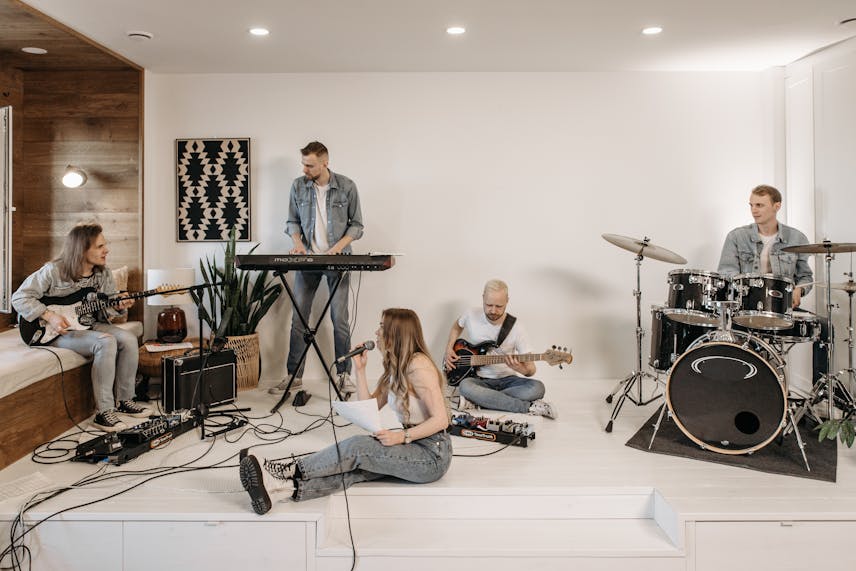When it comes to creating LOFI music, drums play an instrumental role in defining the genre’s laid-back and mellow vibe. The percussion in LOFI tracks is distinctive, with a signature sound that’s as essential as the genre itself.
Understanding the Basics of Drums in LOFI Music
LOFI music is known for its use of simplistic, often vintage-sounding drum patterns. These patterns are usually characterized by their ‘unpolished’ audio quality, which contributes to the music’s relaxed and nostalgic feel. The drums for LOFI are not about complexity but rather about creating a steady, hypnotic rhythm that allows listeners to sink into the music.
The Role of Tempo and Groove
Most LOFI tracks maintain a slower tempo, typically ranging from 70 to 90 beats per minute. This tempo is a key factor in crafting the music’s chill atmosphere. The groove of the drums is equally important, often incorporating subtle swing rhythms that give LOFI its characteristic looser, off-kilter feel.
Choosing the Right Drum Sounds
The selection of drum sounds is crucial in LOFI production. Producers tend to gravitate towards samples that possess a ‘warmer’ acoustic quality—think of kick drums that are deep and soft, snares that are muted or brushed, and hi-hats that are understated. These sounds are frequently processed to add ‘texture,’ such as vinyl crackles or tape hiss, which enhances the vintage aesthetic.
Creating the Signature LOFI Drum Beat
To create an authentic LOFI drum pattern, producers often start with a simple four-bar loop. The kick and snare are the foundation, with the kick usually hitting on the downbeats and the snare on the backbeats. Hi-hats or other cymbals are added to fill in the rhythm, often played with a slight delay or ‘lazy’ timing to achieve that classic LOFI swing.
Layering and Effects
Layering different drum sounds can add depth and complexity to a LOFI beat. For example, layering a soft kick with a more resonant one can give the beat a more pronounced bottom end. Effects such as reverb, lo-fi filters, and bit crushers are also used to manipulate the drums, ensuring they sit perfectly within the mix without sounding too pristine.
Sampling and Drum Machines
Many LOFI producers use samples from old records or drum machines to get authentic-sounding drums. Machines like the Akai MPC or the Roland SP-404 are popular for their ability to process and ‘dirty up’ drum sounds, giving them that sought-after LOFI quality.
Programming Versus Live Recording
While programming drums using digital audio workstations (DAWs) is commonplace in LOFI music production, some artists prefer to record live drums to capture a more organic sound. This method can introduce natural variances in timing and velocity, which can contribute to the music’s human touch.
Integrating Drums with Other Elements
Once the drum track is laid down, it’s important to consider how it interacts with other elements of the song. The bassline, for example, should complement the kick drum, locking in to create a cohesive rhythm section. Pads, keys, and other melodic elements must also be balanced with the drums to achieve the overall dreamy and melancholic vibe of LOFI music.
In conclusion, drums for LOFI music are much more than just a background rhythm; they are the heartbeat of the genre. From the choice of samples to the tempo and effects used, every aspect of the drum track contributes to the creation of a space where listeners can relax and find solace.


